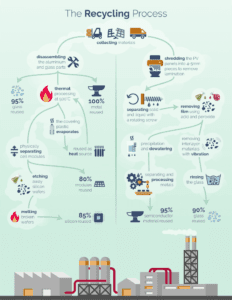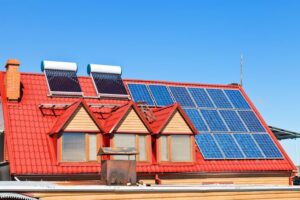One of the beauties of solar power is that, once installed, solar panels require little maintenance throughout their rated lifetime. The initial startup cost of installation can be a deterrent for many homeowners, but in reality, the monthly energy savings pay back the installation costs relatively quickly. With limited maintenance costs, solar panels really are strong long-term investments.
Solar Panel Efficiency
In general, photovoltaic (PV) systems come with a 20-year warranty and a guarantee that the solar panels will continue to produce at least 80% of their rated power after the initial 20-year period. Solar panel durability has improved in lockstep with improvements in PV technology and manufacturing, however, so a solar panel produced after the year 2000 will only degrade by 0.4% a year. At this rate, it will retain 92% of its original efficiency after 20 years. Yet, even with this minimal degradation, there are some basic maintenance tasks that can be done to reduce the wear and tear on the panels and maintain high efficiency throughout the lifetime of the system.
Clear Dirt & Debris
Homeowners with
solar panel installations should be primarily concerned with keeping the panels free of dirt and debris. This will be a bigger problem in systems with flat-lying panels, as opposed to those oriented at an angle. Anything that covers the panels will reduce the electrical output of the system, so it is important to not let some dust reduce the efficiency of the system. In most cases, simply spraying the solar panels with a hose will suffice, but you could also use a sponge on a pole to squeegee the panels and remove any stickier items, like bird droppings. Many solar companies also offer cleaning services and there are cleaning supplies available for purchase on the internet.
Ensure Access to Sunlight
Similar to keeping the panels clear, it is important to ensure clear access to sunlight. Solar access could be impeded by overgrown vegetation or new structures, so always keep an eye on what’s happening south of the installation. It may be necessary to trim back some trees or talk to your neighbor so they don’t block your sunlight.
Weather Buffer
Solar panels are more susceptible in harsh climates, particularly those that experience heavy snowfall, strong winds, or frequent hail. If space and the angle of the panels permit, homeowners may consider erecting a buffer to protect the panels from the worst of the climate. Reducing the direct impact to the solar panels will extend their lifetime and improve efficiency.
There are other, rarer, things to look out for as well. Ideally, your solar panels will not much that can fall on them, but there could be instances when they are damaged by hail, or falling sticks, or a rogue cat. Keep an eye out for broken glass on the top of the panels; if there is broken glass the
solar panel could be compromised and will need to be replaced.



 For more details, see
For more details, see 










